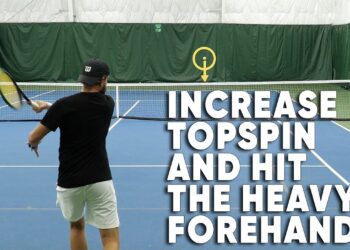Ever feel like tennis scoring was invented by a drunk time traveler?
Between “love,” 15, 30, 40, and that mysterious thing called “deuce,” tennis can feel like a sport designed to confuse.
In this guide, we’ll cover how to keep score from the first point to match point, walk through deuce, tiebreakers, side switches and even tackle the weird history of the word “love.”
Why Is Tennis Scoring So Weird? A Quick Origin Story
12th Century Handball, Clocks, and Love
Tennis scoring is weird. Like, really weird. But there’s a reason, sort of.
Legend has it that the modern tennis scoring system dates back to the 12th century when the game was more handball than racquet sport.
French monks would slap a ball around cloisters for fun (because, well, medieval times), and someone had the bright idea to keep score using a clock face.
Each point moved the minute hand, 15, 30, 45.
Over time, “45” was shortened to “40” because, apparently, saying “forty-five” was just too much effort.
And then there’s “love,” which means zero.
Some say it comes from the French word l’oeuf (egg), because an egg looks like a zero.
Others say it’s because players compete “for the love of the game.”
So why hasn’t it changed in over 800 years?
Because tennis is steeped in tradition.
The scoring may not make logical sense, but it’s part of what makes the game charming.
And once you learn it, it becomes second nature, even if it still feels like it came out of a medieval fever dream.
The Basics: Understanding Points, Games, Sets & Matches
Let’s break it down from the very beginning.
Scoring in tennis isn’t rocket science, it just sounds like it was invented by someone who was bad at math.
But once you get the system, it’s as logical as a baseline rally.
Points – The 15, 30, 40, Game System
Each game in tennis is made up of points. Here’s the flow:
- First point = 15
- Second point = 30
- Third point = 40
- Win the next one = Game
Zero points? That’s “love.” And yeah, we’re still rolling with that 12th-century wordplay.
Oh, and always call the server’s score first.
If I’m serving and I’ve won two points and you’ve won one, the score is 30–15. Flip that if you’re serving. Get this wrong, and yeah, you’ll get some side-eye from your opponent.
Games – Win By Two
To win a game, a player has to win four points and lead by at least two.
- If the score is 40–30 and the server wins the next point → Game
- If the score is 40–40, welcome to the world of Deuce
Deuce and Advantage – What Happens at 40–40
Deuce happens when both players win three points (40–40).
From here, someone has to win two points in a row to close out the game.
- Win one point = you’ve got the Advantage (aka “Ad”)
- If the server wins it → it’s called “Ad-In”
- If the receiver wins it → it’s called “Ad-Out”
- If the server wins it → it’s called “Ad-In”
Win the next point after Advantage? Game. Lose it? Back to Deuce.
And yes – this can go on forever.
Set and How to Win It
Okay, now that you’ve got games down, let’s zoom out and look at the bigger picture: sets.
To win a set, you need to win six games, but, surprise! you’ve got to win by two.
So 6–2, 6–3, or 6–4? That’s a win. But if it’s 6–5? Not yet.
You need to make it 7–5 to take the set.
Here’s where a lot of players (even some seasoned ones) get tripped up:
If the score hits 6–6, that’s your cue to break out the tiebreak game, which we’ll dive into next.
When Is a Tiebreak Played?
So what happens when the score hits 6–6 in a set and both players refuse to budge?
Enter the tiebreak – a fast-paced, high-pressure sprint to settle the set.
In most matches, you’ll play a 7-point tiebreak, and you’ve still got to win by two points.
This replaces the old-school format where players kept slugging it out until someone pulled ahead by two games, matches that could last hours (or days).
Tiebreak Scoring Rules
Tiebreaks ditch the classic “love, 15, 30, 40” format.
In this case, it’s just simple numbers: 0, 1, 2, 3, 4… until someone hits 7 with a two-point lead.
Here’s how it works:
- First server only hits one serve, from the deuce side (right side).
- Then, the next player serves two points, starting from the ad side (left side).
- After that, each player continues to serve two points, alternating sides every time.
To keep things fair:
- Switch sides every six total points. That means if the score is 3–3, 6–6, or 9–9, flip the court.
Win the tiebreak and you win the set, 7–6.
Source -> https://keepthescore.com/blog/posts/tennis-scoring/
When Do You Actually Win the Whole Thing?
Alright, now you know how to win a game, a set, and a tiebreak.
But how do you actually win the entire match?
Most recreational matches, and even many pro matches, use the best of three sets format.
That means:
- First to win two sets → wins the match.
Simple, clean, and ideal for folks who don’t want to be on the court until sunset.
But in men’s Grand Slam tournaments (think Wimbledon, the US Open, French Open, and Australian Open), players go all out in a best of five sets format. Yep, first to win three sets takes the match.
Changing Sides: When and Why It Happens
During Games
Players switch sides after:
- Game 1
- Then again after every two games (Games 3, 5, 7, etc.)
Why? Because Mother Nature doesn’t always play fair.
One side might have the sun glaring in your eyes, or the wind might be blowing your toss into the next zip code.
Switching helps level the playing field so no one gets stuck battling the elements for too long.
🌤️ PlayYourCourt Tip: If you’re playing outdoors, use these side changes to reset, rehydrate, and strategize, don’t just drag your feet to the other side.
During Tiebreaks
Things move even faster during tiebreaks.
Since points fly by and every one matters, players switch sides every six total points.
For example:
- At 3–3, switch.
- Again at 6–6, 9–9, and so on.
This ensures both players face the same conditions over the course of the breaker.
It might feel like overkill, but in a tight match, even the wind can swing the momentum.
Score and Serve Position: How to Know Where to Stand
If you’ve ever stood at the baseline asking yourself, “Wait… am I serving from the left or the right?” – you’re not alone.
This is the headache beginners get.
The good news? There’s an easy system to figure it out, and it works every time.
Deuce Side vs Ad Side
Let’s start with the basics:
- Deuce side = Right side of the court
- Ad side = Left side of the court
And here’s your golden rule:
Even scores (0–0, 15–15, 30–30, deuce) = Serve from the deuce side
Odd scores (15–0, 40–30, ad) = Serve from the ad side
Whether you’re starting a game or mid-rally, this rhythm stays the same throughout the match.
Every time the total number of points played is even, you’ll be serving from the right (deuce) side.
If it’s an odd number, you’re on the left (ad) side.
Source -> https://mesatennis.weebly.com/tennis-tips.html
Biggest Beginner Worries (And How To Overcome Them)
🎯 Forgetting the Score Mid-Game
You’re locked in a battle, and suddenly you can’t remember if it’s 30–15 or 30–30.
Don’t panic.
Fix: Use the odd/even point trick we covered earlier. If you know which side you’re standing on, you can often backtrack to figure out what the score must be.
Plus, confirm scores aloud after every point, this helps both players stay on the same page.
🗣️ Saying It Wrong Out Loud
Calling the score as the server can feel like announcing the weather on live TV.
You don’t want to mess it up.
Fix: Keep it simple. Always call your score first, then your opponent’s.
Even if you mess up, saying something confidently like “30–15, I think?” is better than staying silent.
Most opponents are happy to help clarify.
↔️ Not Knowing Which Side to Serve From
You’ve got the ball, but you’re not sure where to stand. Classic case of scoring anxiety.
Fix: Trust the even/deuce, odd/ad rule.
If you just played an even-numbered point (like 2 or 4 total points), you’re on the deuce (right) side. Odd? Ad (left) side.
From Learning to Score to Learning to Win
You’ve just mastered one of tennis’s biggest mental hurdles – how to keep score.
But knowing the rules is only the beginning.
The real magic happens when you use that knowledge to play smarter, improve faster, and start winning more matches.
That’s exactly what our new PlayYourCourt membership is built for.
We’re no longer just about finding you a partner, we’re your all-in-one game improvement platform.
Whether it’s scoring strategy, serve consistency, or shot selection, we’ll coach you through it.
👉 Explore our membership and start turning what you’ve learned today into real results tomorrow.
You’ve got the score down. Now let’s build the rest of your game around it.



